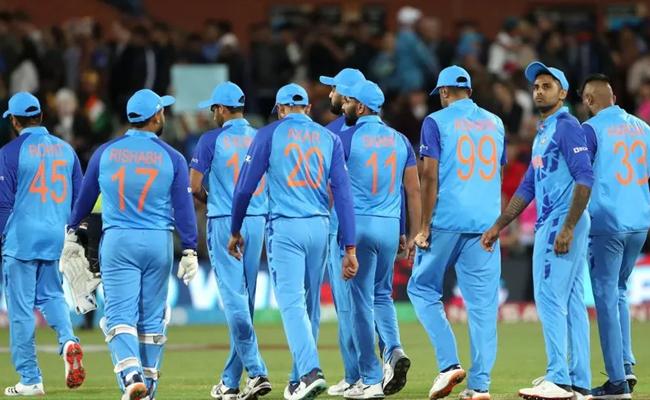
India suffered a humiliating ten-wicket defeat to England in the semifinal of the ICC Men's T20 World Cup 2022 and there were certain decisive factors -- timid batting approach in powerplay, no penetration with new ball -- which resulted in Rohit-Sharma led side's exit from the mega event in Australia.
Be it the 2019 ODI World Cup, the 2021 T20 World Cup or 2022 edition of the T20 World Cup, the lack of success in these campaigns continues to haunt the Indian team.
But, what went wrong? Here's a look at some of the factors that contributed to India's downfall in Australia.
Lack of a strike bowler: Taking wickets in the powerplay through the movement of Arshdeep Singh and Bhuvneshwar Kumar has been India's Plan A during the tournament, using spin and bowling into the pitch to soak up the middle overs and then executing plans at the death.
It's a decent strategy and strikingly similar to that of semi-final opponents England. But when early wickets don't come, both attacks can look a little toothless at times.
That was certainly the case for India on Thursday, with the absence of the injured Jasprit Bumrah keenly felt. When India needed a cutting edge there didn't seem like a banker of an option that the captain could use.
Four of India's bowlers went at more than ten-an-over - Kumar, Mohammed Shami, Ravichandran Ashwin and Pandya - with Axar Patel being milked for 30 harmless runs from his four overs and Arshdeep also failing to keep it tight.
Batters in powerplay: Time and again, India's start at the top was questioned. While KL Rahul struggled to impose himself with the bat in 4 of the 6 matches, Rohit Sharma only got one half-century to his name. In the powerplays, India's batting was among the worst in the tournament.
Ageing stars: Skipper Rohit Sharma is already 35 while Virat Kohli, as good as he is, has turned 34. Suryakumar Yadav, despite not being a part of the system for a long time, is 32. Dinesh Karthik, India's 'finisher' for the tournament, is 37. Mohammed Shami and Bhuvneshwar Kumar are both 32. Barring Kohli, none of these players performed at the level they were expected to.
Reluctance to play wrist-spinners: India played a total of 6 matches in the T20 World Cup (5 in the Super 12s and 1 semi-final). In none of these matches Yuzvendra Chahal, the only wrist-spinner in the 15-man squad, was used. Both Ravichandran Ashwin and Axar Patel were persisted with for the entire length of the tournament. Wrist spinners have historically proved to be wicket taking options in T20 cricket.














